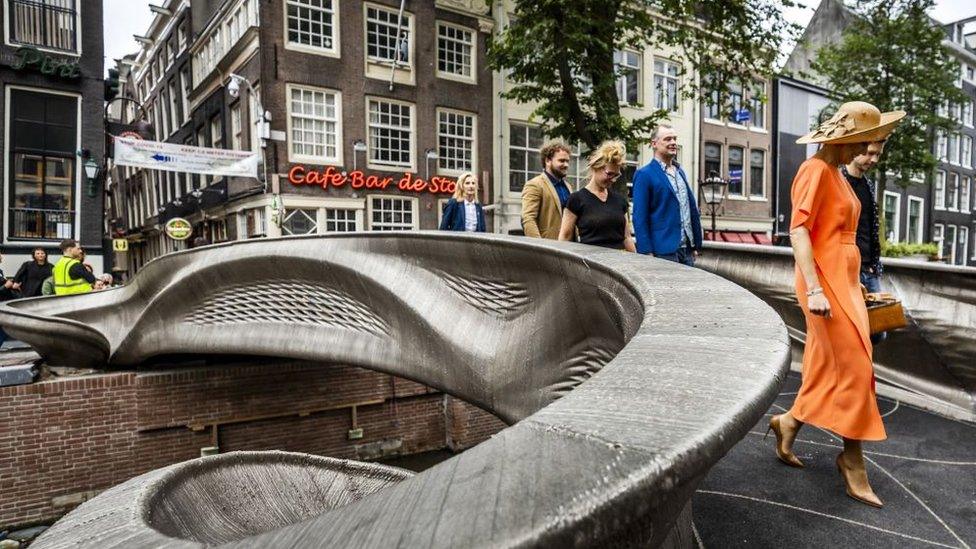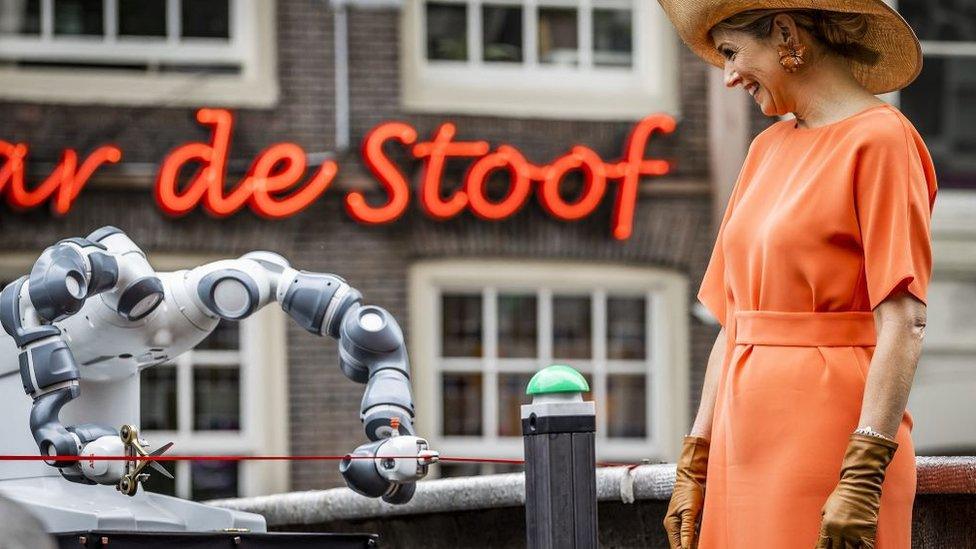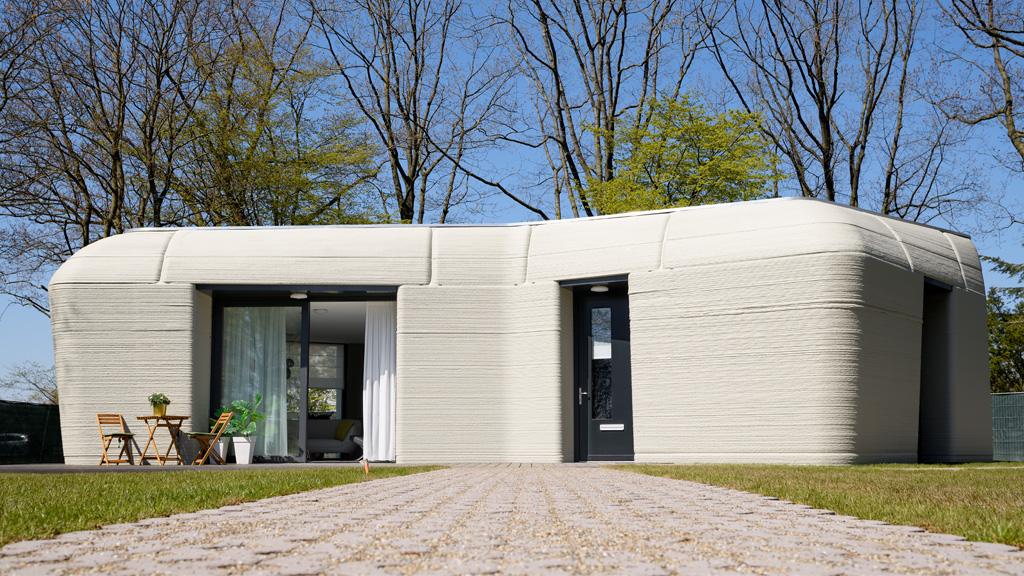World's first 3D-printed steel bridge opens in Amsterdam
- Published
- comments

The first ever 3D printed steel bridge has opened in Amsterdam, in the Netherlands.
The bridge was created by robotic arms, it is 12 metres long, made of 4500kg of stainless steel and took six months to print.
The structure was carefully transported to its location over the Oudezijds Achterburgwal canal in Amsterdam last week.
It was unveiled by Queen Máxima of the Netherlands, who used a robotic arm equipped with scissors to cut the ribbon.
The bridge is now open for pedestrians and cyclists.

Queen Máxima of the Netherlands unveiled the new bridge and a robotic arm cut the ribbon
How do you print a bridge?
It has taken four years to develop and make the bridge. It was co-developed by Imperial College London and printed by Dutch company MX3D who specialise in 3D metal printing tools.
The robotic arms that made the bridge used welding torches to create the structure layer by layer.
Several sensors are attached to the bridge. They will be used to monitor movement, temperature and vibrations across the structure as people go over it.
They'll also track how changes in the weather affect the structure.
This data will then be sent to a digital model of the bridge.
What next for printed bridges?
Engineers will use the digital model on the computer to see at how the bridge is doing and decide whether any changes or maintenance might be needed.
They will also use anything learnt from this model for future 3D steel structures, so they can see what worked well and not so well and apply that to more complicated building projects.
Mark Girolami at the University of Cambridge who is working on this digital model said that sometimes any problems with bridge failures are discovered too late, so having this digital model giving constant data feedback means they can spot any problems quicker.
- Published2 October 2014

- Published4 May 2021

- Published29 October 2013

